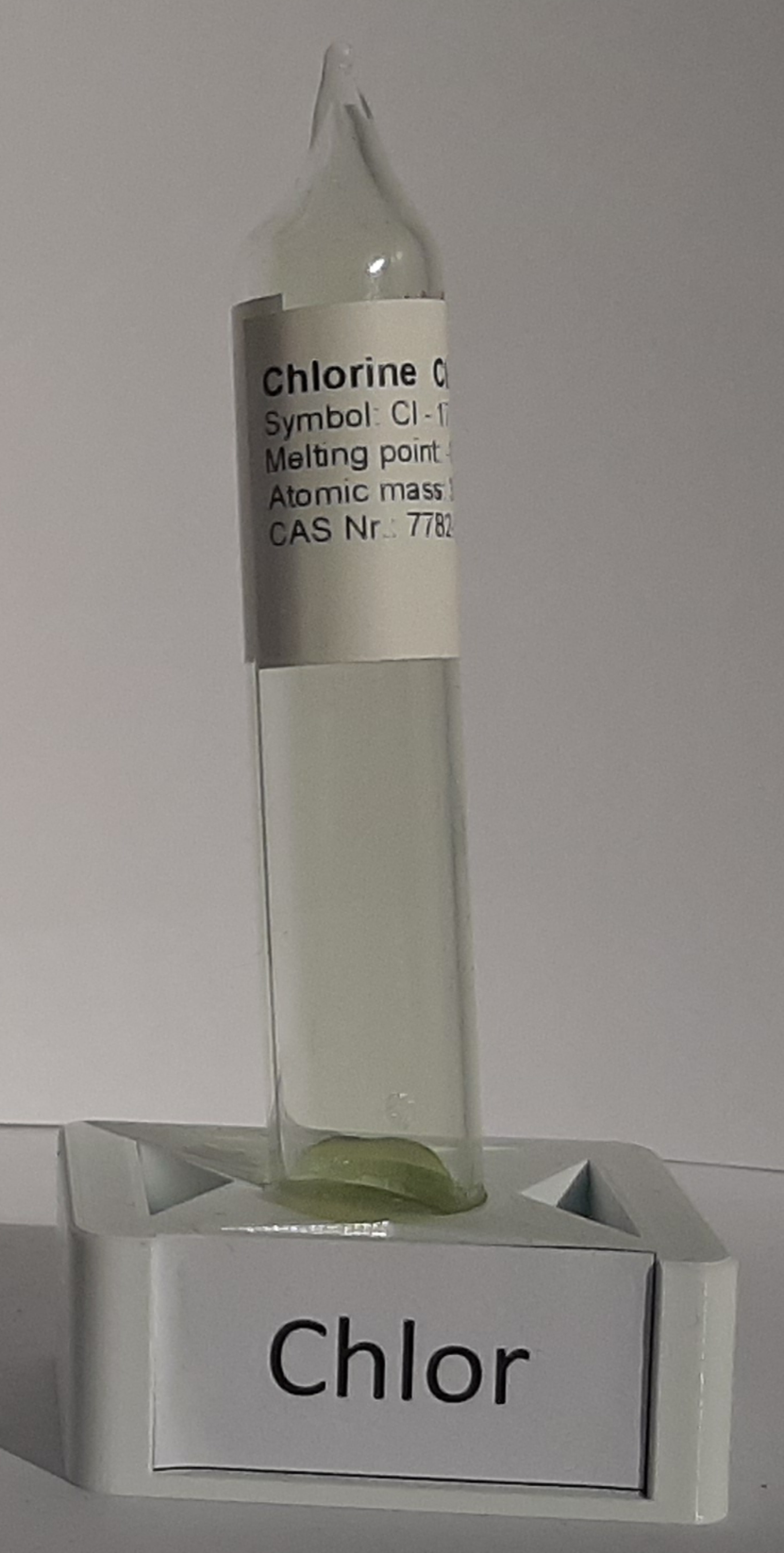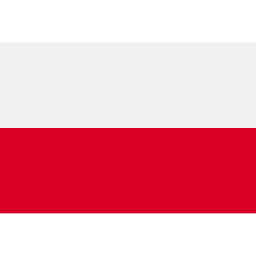
Chlorine (from Latin Chlorum) Cl
Sylwin (occurrence: Germany, Great Britain, Canada, in Poland it occurs in Kujawy), halite (Italy, France, Portugal, in Poland in the "Wieliczka" salt mine and in Bochnia), carnallite (Germany, Russia, Spain, in Poland mainly in Inowrocław and Kłodawa).
Non-metal, yellow-green gas with a characteristic irritating odor, poisonous, forms diatomic Cl2 molecules, very chemically active. It reacts directly with most elements and is a strong oxidant. Chlorine condenses at -34°C, and with hydrogen it forms a very strong acid, HCl (hydrochloric acid), which is found in the human stomach.
HCl, NaCl, CaCl2, HClO4, HClO
Most chlorine is produced electrolytically, either by a membrane process or by a mercury cell process. In each process, a salt solution (sodium or potassium chloride) is electrolyzed by direct electric current, which converts chloride ions into elemental chlorine. In the case of the electrolysis process, the process steps are as follows: when sodium chloride is dissolved in water, it forms a brine, then electricity is supplied to the brine to produce chlorine gas (Cl2). As a result, two other substances are formed: caustic soda (usually in the form of sodium hydroxide (NaOH) and hydrogen (H2), this reaction occurs according to the equation: 2NaCl + 2H2O = H2 + Cl2 + 2NaOH. The resulting gases (chlorine and hydrogen) are separated from each other, and the hydrogen can be used for other chemical reactions.
Chlorine is a raw material for the production of polyvinyl chloride (PVC), one of the most frequently produced plastics. It is commonly used in swimming pools as a disinfectant. This element is used to produce hydrochloric acid HCl, which is used in the chemical industry for various purposes such as the production of salts and solvents. Chlorine is used as a bleaching agent in the production of paper and fabrics. It is also used in cleaning products including household bleach, which is chlorine dissolved in water. Chlorine is used to produce chlorides, chlorinated solvents, pesticides, polymers, synthetic rubbers and refrigerants.
The largest producer of chlorine in the world is the United States, and other important producers are Australia, Brazil, Canada, Chile and China.
Chlorine is widely used to disinfect water in municipal systems and other drinking water sources. This prevents the spread of infectious diseases and is crucial for public health. Chlorine is an effective agent for controlling microorganisms, bacteria and algae in swimming pools and other recreational facilities. Chlorine has been used to purify drinking water since 1908, when it was introduced in New Jersey, USA. Over the next decade, the process grew in popularity, and by 1918 the U.S. government mandated that all drinking water be purified in this way. The production and disposal of chlorine-containing plastics, especially in the case of waste, can be a problem because they are difficult to biodegrade. If all the chlorine in the sea were released into the atmosphere as a gas, the weight of the atmosphere would increase fivefold. Chlorine ions help regulate osmotic pressure and help us digest food. Most of the chlorine in our diet comes from sodium chloride - table salt. Sir Humphry Davy was the first to identify and name chlorine in 1811. Pure chlorine had already been produced decades earlier by Carl Wilhelm Scheele, but he did not realize that it was a separate element and instead confused it with oxygen. Davy named chlorine from the Greek word "chloros", meaning green-yellow. It is estimated that one chlorine atom can destroy 100,000 ozone molecules, causing severe depletion of this key stratospheric layer and a serious threat to our climate. This is one reason why chlorine must be handled very carefully.


